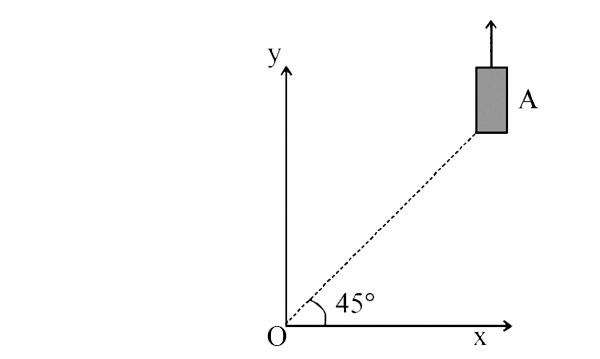An object is released from rest. The time it takes to final through a distance h and the speed of the object as it falls through this distance are measured with a pendulum clock.
The entire apparatus is taken on the moon and the experiment is repeated the measured times are same the measured speed are same the actual time in the fall are equal the actual speeds are equal moon and the experiment is repeated the measured times are same the measured speed are same the acrual time in the fall are equal the actual speeds are equal.
a, b are true
b, c are true
c, d are true
a, d are true
The correct Answer is:A
Topper's Solved these Questions
- OSCILLATIONSBOOK - AAKASH SERIESCHAPTER - OSCILLATIONSEXERCISE - EXERCISE II
175 Videos
- OSCILLATIONSBOOK - AAKASH SERIESCHAPTER - OSCILLATIONSEXERCISE - Practice exercise
140 Videos
- OSCILLATIONSBOOK - AAKASH SERIESCHAPTER - OSCILLATIONSEXERCISE - PROBLEM
249 Videos
- OSCILLATIONBOOK - AAKASH SERIESCHAPTER - OSCILLATIONEXERCISE - QUESTIONS FOR DESCRIPTIVE ANSWERS
12 Videos
- PHYSICAL WORLDBOOK - AAKASH SERIESCHAPTER - PHYSICAL WORLDEXERCISE - VERY SHORT ANSWER TYPE QUESTIONS
5 Videos
Similar Questions
An object is released from rest. The time it takes to fall through as distance h and the speed of the object as it falls through this distance are measured with a pendulum clock. The entire apparatus is taken on the moon and the experiment is repeated
View SolutionA ball falls freely from rest. The ratio of the distance travelled in first, second, third and fourth second is
View Solution
Knowledge Check
An object is released from rest. The time it takes to fall through a distance h and the speed of the object as it falls through this distance are measured with a pendulum clock. The entire apparatus is taken on the Moon and the experiment is repeated. Then,
Athe measured times are same.Bthe measured speeds are same.Cthe actual times in the fall are equal.Dthe actual speeds are equal.An object is released from rest. The time it takes to fall through as distance h and the speed of the object as ilt fallls through this distance are measured with a pendulum clock. The entire apparatus is taken on the moon and the experiment is repeated
Athe measured times are sameBthe measured speeds are sameCthe actual times in the fall are equalDthe actual speeds are equalA stone is allowed to fall freely from rest. The ratio of the time taken to fall through the first metre and the second metre distance is
A√2−1B√2+1C√2DNone of these
The object that covers a given distance in a lesser time has more speed.
View SolutionOn a frictionless horizontal surface , assumed to be the x−y plane , a small trolley A is moving along a straight line parallel to the y−axis ( see figure) with a constant velocity of (√3−1)m/s . At a particular instant , when the line OA makes an angle of 45(∘) with the x− axis , a ball is thrown along the surface from the origin O. Its velocity makes an angle ϕ with the x− axis and it hits the trolley .
(a) The motion of the ball is observed from the frame of the trolley . Calculate the angle θ made by the velocity vector of the ball with the x−axis in this frame .
(b) Find the speed of the ball with respect to the surface , if ϕ=(4θ)/(3).

View SolutionA pendulum clock is taken to moon. Will it gain or lose time?
View SolutionA particle is dropped vertically from rest from a height. The time taken by it to fall through successive distances of 1 m each will then be
View SolutionAn object falls through a distance h in certain time on the earth. The same object falls through a distance 4h in the same time on a planet. If 'g' is acceleration dur to gravity on the earth then acceleration due to gravity on that planet will be
View Solution
